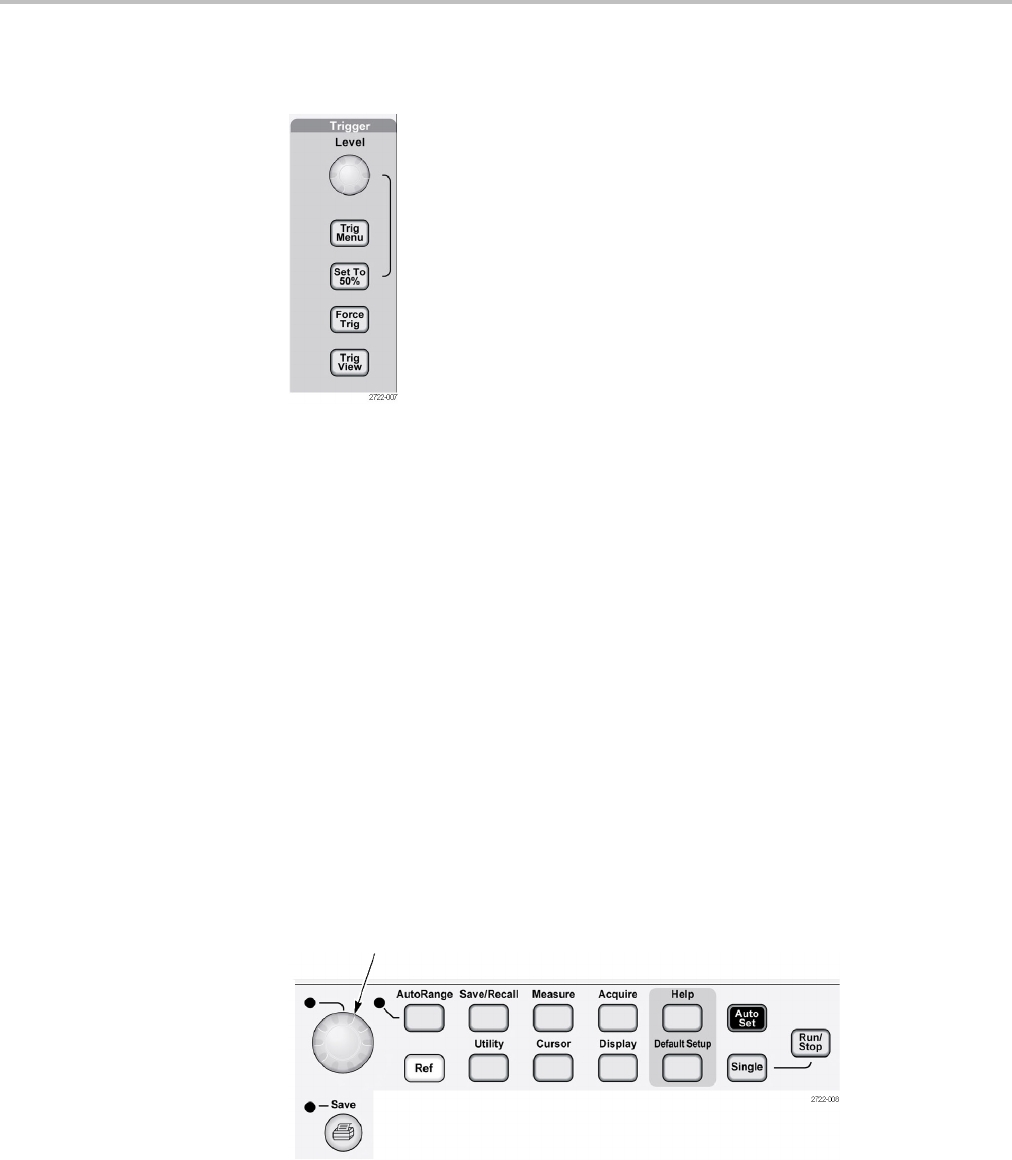User manual
Table Of Contents
- toc
- General safety summary
- Compliance Information
- Preface
- Getting Started
- Operating Basics
- Understanding Oscilloscope Functions
- Application Examples
- Taking Simple Measurements
- Using Autorange to Examine a Series of Test Points
- Taking Cursor Measurements
- Analyzing Signal Detail
- Capturing a Single-Shot Signal
- Measuring Propagation Delay
- Triggering on a Specific Pulse Width
- Triggering on a Video Signal
- Analyzing a Differential Communication Signal
- Viewing Impedance Changes in a Network
- Data Logging
- Limit Testing
- Math FFT
- USB Flash Drive and Device Ports
- USB Flash Drive Port
- File Management Conventions
- Saving and Recalling Files With a USB Flash Drive
- Using the Save Function of the Print Front Panel Button
- USB Device Port
- Installing the PC Communications Software on a PC
- Connecting to a PC
- Connecting to a GPIB System
- Command Entry
- Connecting to a Printer
- Printing a Screen Image
- Reference
- Appendix A: Specifications
- Appendix B: TPP0101 and TPP0201 Series 10X Passive Probes Inform
- Appendix C: Accessories
- Appendix D: Cleaning
- Appendix E: Default Setup
- Appendix F: Font Licenses

Operating Basics
Trigger Contr
ols
Level. When you use an Edge or Pulse trigger, the Level knob sets t he amplitude
level that the signal must cross to acquire a waveform.
Trig Menu
. Displays the Trigger Menu.
Set To 50%. The trigger level is set to the vertical midpoint between the peaks of
the trigger signal.
Force Trig. Completes an acquisition regardless of an adequate trigger signal.
This b
utton has no effect if the acquisition is already stopped.
Trig View. Displays the trigger waveform in place of the channel waveform while
you hold down the Trig View button. Use this to see how the trigger settings
affect the trigger signal, such as trigger coupling.
Men
u a nd Control Buttons
Multipurpose knob
TBS1000 Series Oscilloscopes User Manual 15










